► Skoda powers a cycling weekend
► The ideal vehicle for cyclists?
► Not for sale but we tried it, anyway
You’d have to be pretty committed to your hobby to buy a new car fitted out with tech entirely for that purpose – but if you did, this Skoda Karoq Velo is as close to a Tour de France support vehicle as it’s possible to purchase.
While it doesn’t come with a speedy technician to change your punctured wheel on the road, it does have an internal bike rack, washing machine and power hose so you can clean and work on your bike where ever you are. In exchange, of course, for most of the bootspace and one of the rear seats.
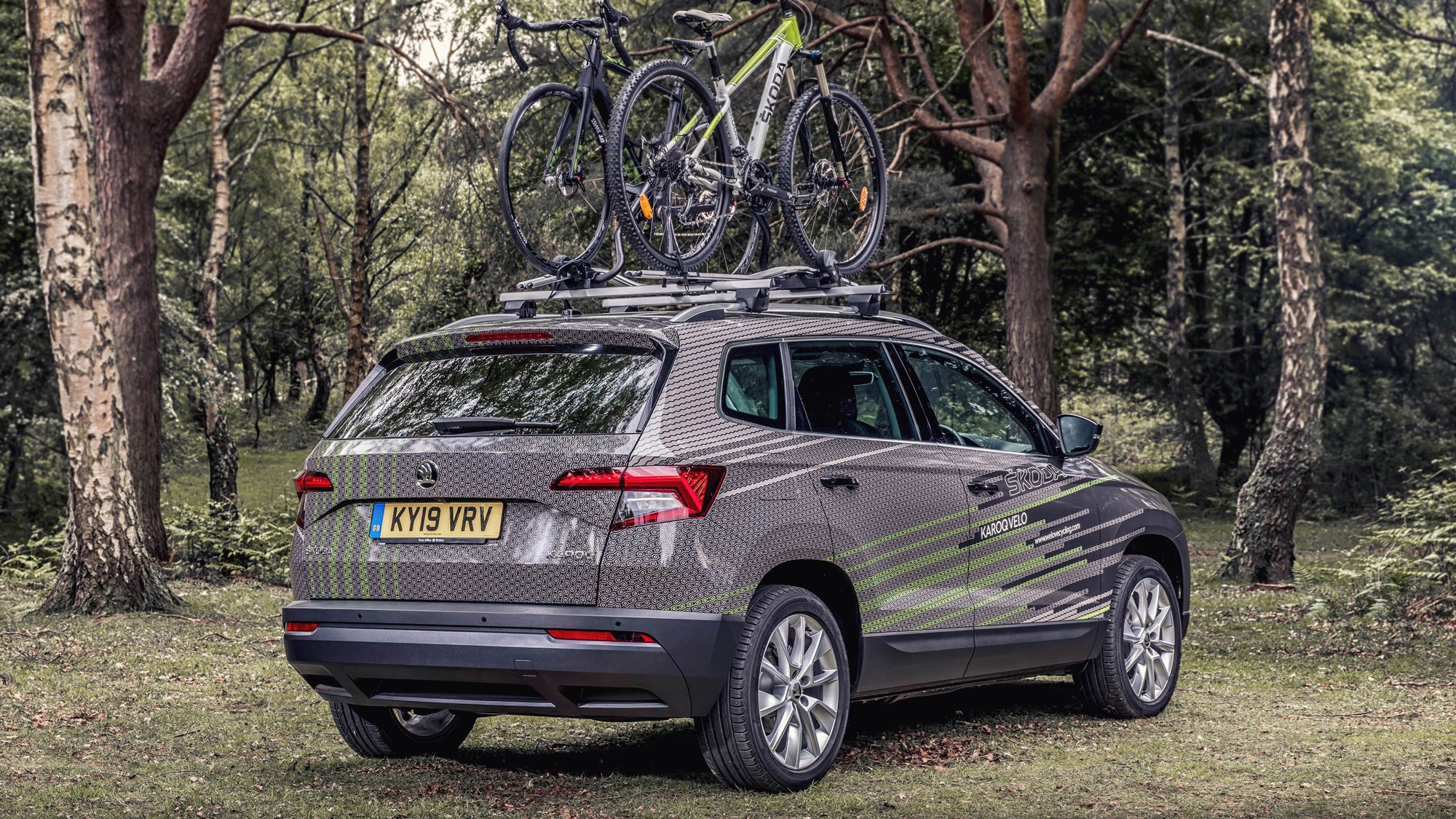
So far only road-going cyclists have assessed this particular vehicle, which is barely half of the sport. We figured it needed a proper mountain bike shake-down to ascertain whether this is the ultimate all-round bicycle support vehicle, or simply one dreamed up by lycraclad tarmac enthusiasts who enjoy pedalling uphill all day.
Our four-day test trip would take in everything from natural cross country routes to man-made trails and even a day at the pantheon of bruised ribs, Bike Park Wales. How would the Karoq Velo cope with carrying an assortment of protective armour and full-face helmets, not to mention two massive full suspension bikes and associated muddy riders?
Tell me more about this car’s special tech
You get most of the things you’d expect in a medium-sized tour bus – the specification having been drawn up by a survey of more than 1,500 cyclists. Let’s talk basic storage first. As well as the ability to get two bikes on the roof thanks to the excellent Thule bars and carriers, there’s also an internal rail for a third bike in the space where the rear left passenger would normally sit, made possible by the fact you can remove each of the rear seats individually in a Karoq.
The roof carriers accepted both mine and Simon’s bikes, although only after a bit of adjustment, due to the fact both were clearly quite a bit longer than the last cycles they carried, and because mountain bike frames are full of weird angles and swing arms that get in the way of the carrier’s support arm.
As for the internal rail with its multi-colour LED lighting to enable night time fettling (for real) we didn’t even attempt to use it. The video demonstration shows a very skinny road bike goes in with reasonable ease, although without a seat attached. A chunky mtb with 800mm bars and 160mm of suspension travel would take up much more room, and I couldn’t be bothered to remove my dropper seat post (this pops your saddle up and down at the press of a button depending on whether you’re climbing or descending) because it’s attached to my handlebars via an internally routed cable.
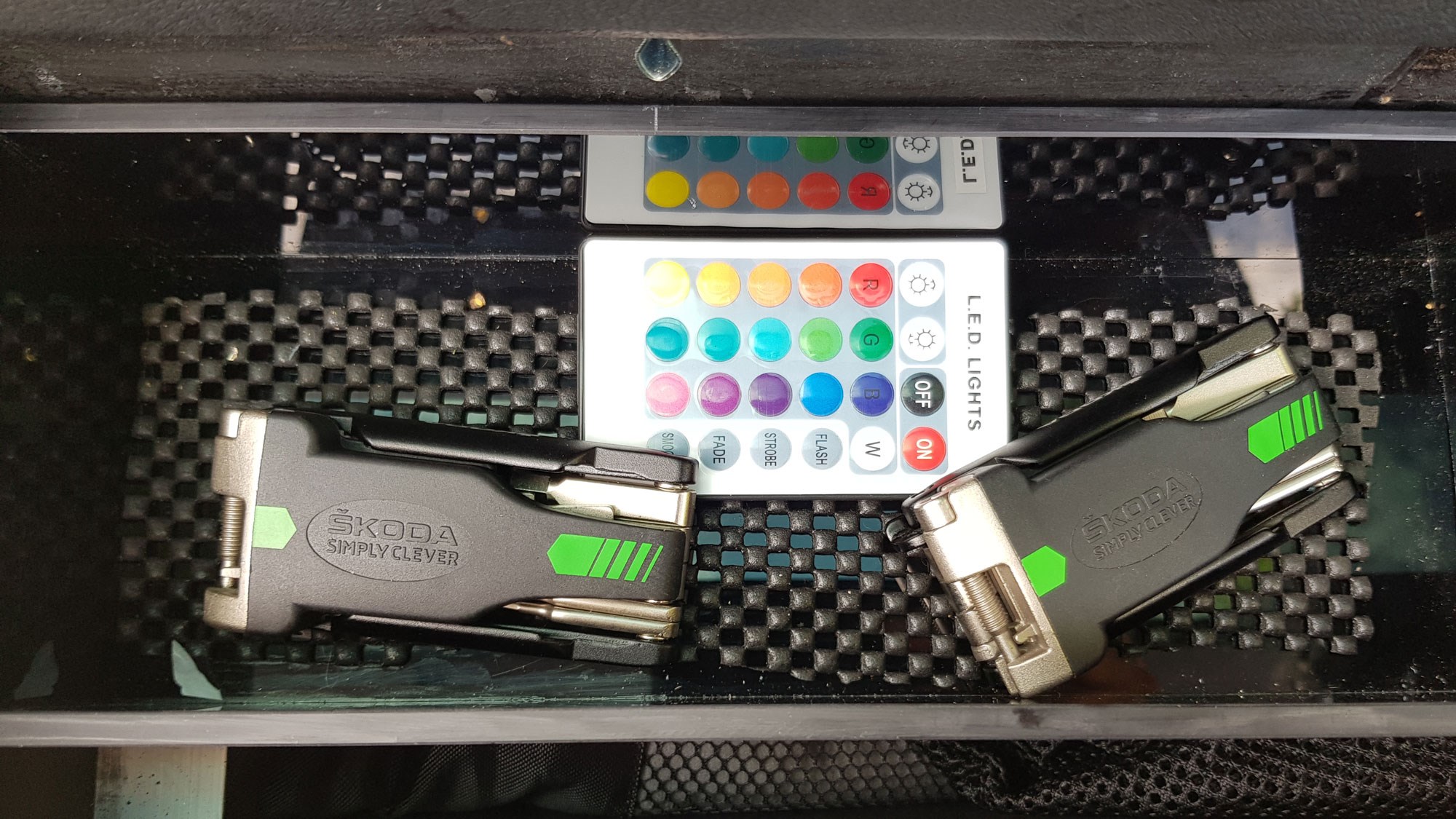
Stop showing off
Sorry – but my point is that mountain bikes are inherently larger and more complicated than their sleek road-going cousins. Plus, because the boot was full of useful items housed in specially made drawers and boxes, we had to neglect the internal rail in exchange for some more equipment storage. Largely because there wasn’t space for my big helmet. Stop laughing.
You won’t be surprised to hear that the Mobi pressure washer with its 15-litre tank was the most useful item. This plugs into the 12v socket in the boot and provides a jet of mildly powerful, muck blasting water. Most home pressure washers are way too powerful for bikes and will blast the grease out of your suspension linkage bearings as quick as look at them, so the fact this unit provides pressure similar to a garden hose is super useful. After a spray down with some bike cleaner, aggravation with a brush, and rinse down with the Mobi, both bikes (and Simon) were as good as new.
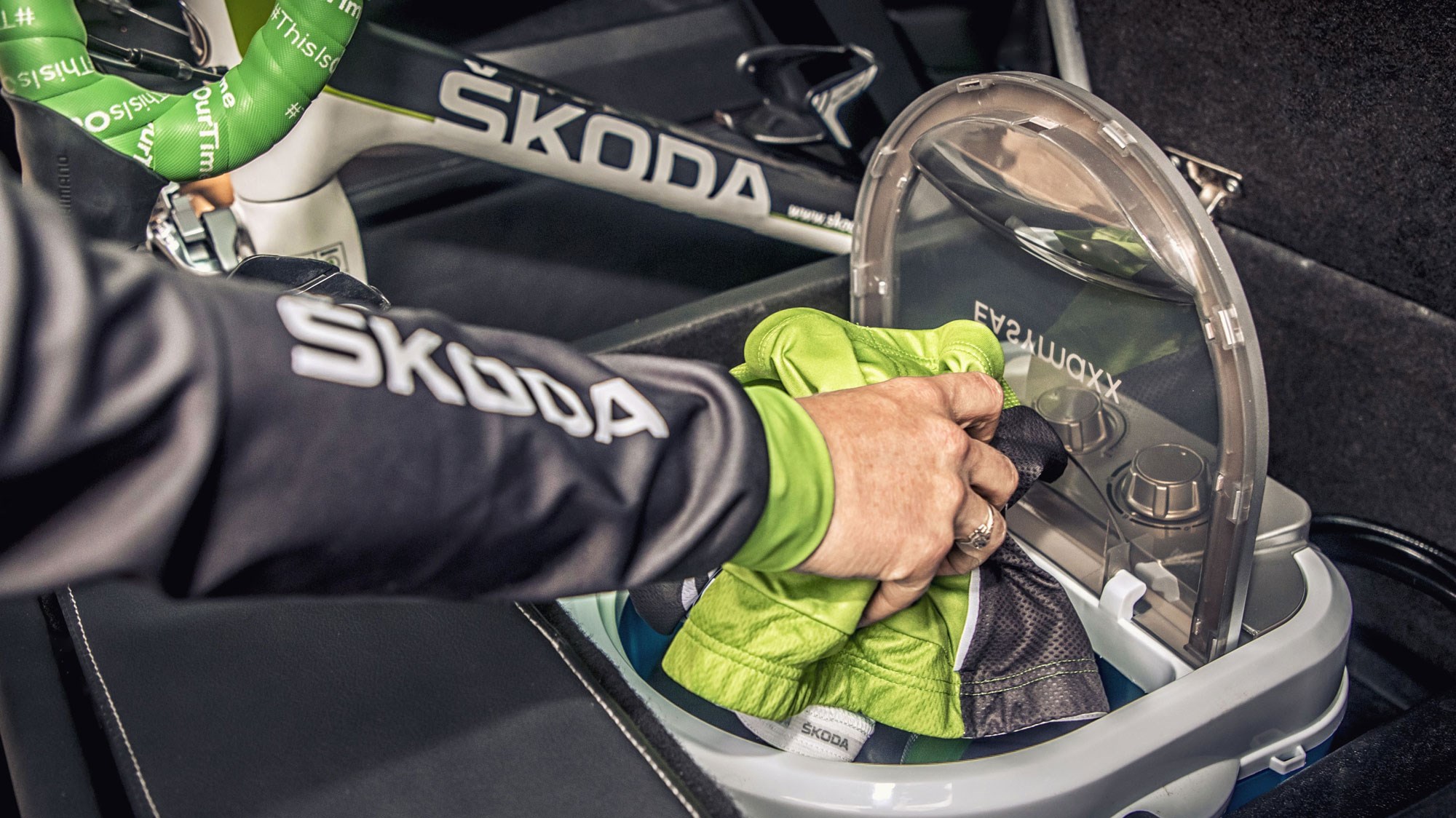
It was so effective in fact that we didn’t bother using the Easymaxx portable washing machine – choosing instead to just hose down our kit with the pressure washer. The reasons for this were twofold; firstly because we’re lazy and it was easier. Secondly, while the machine was undoubtedly up to the job of spritzing up a roady’s lightly sweated lycra, I didn’t want to destroy its filter by asking it to wash my frankly disgusting kit after a muddy day at Bike Park Wales. Plus my t-shirt had quite a lot of my blood on it.
Cop out. What other tech did you dodge testing?
We didn’t try the Skoda helmets because the places we were riding were more of a full-face environment and I didn’t want to leave half of my teeth in Wales in the event of a big off. We also planned to get some follow-cam footage with the drone (a DJI Mavic) until we realised there were trees everywhere – and that sounded like a recipe for a smashed drone panic-flying into commercial airspace, or at least an awkward phone call to Skoda and a big bill for its replacement. I did have a go with it in a big field however, miles away from buildings and dog-walkers, and it was super easy to fly, so maybe we should have just gone for it.
Other than the pressure washer the gadget that proved the most useful was the middle-rear seat mounted fridge, which was big enough for two big bike bottles and a bunch of bananas. Given the 30+ degree heat on the weekend we went riding, this was basically indispensable. Water superheated in a hot car interior at the end of ride tastes like drinking the air out of a hair dryer, while the fridge kept things cool even with the engine off. Conversely, the 12v powered espresso machine was very helpful in energising tired legs as the days and miles wore on.
I’d probably bin-off the tool storage drawer and just take a toolbox (which we did anyway) and the clothes storage on the right hand side of the boot seemed like it just took up space that the jack and tyre sealant system could use, rather than those being relegated to the passenger door bin.
Why has Skoda done this?
It’s not a car you can actually buy, rather another way of stamping the Czech manufacturer’s badge all over the sport of cycling. Automotive associations are pervasive and hard-wearing after all – Volvo people have dogs, BMW owners wear polo shirts, Skoda drivers ride bikes. Or so the marketing department would like you to believe.
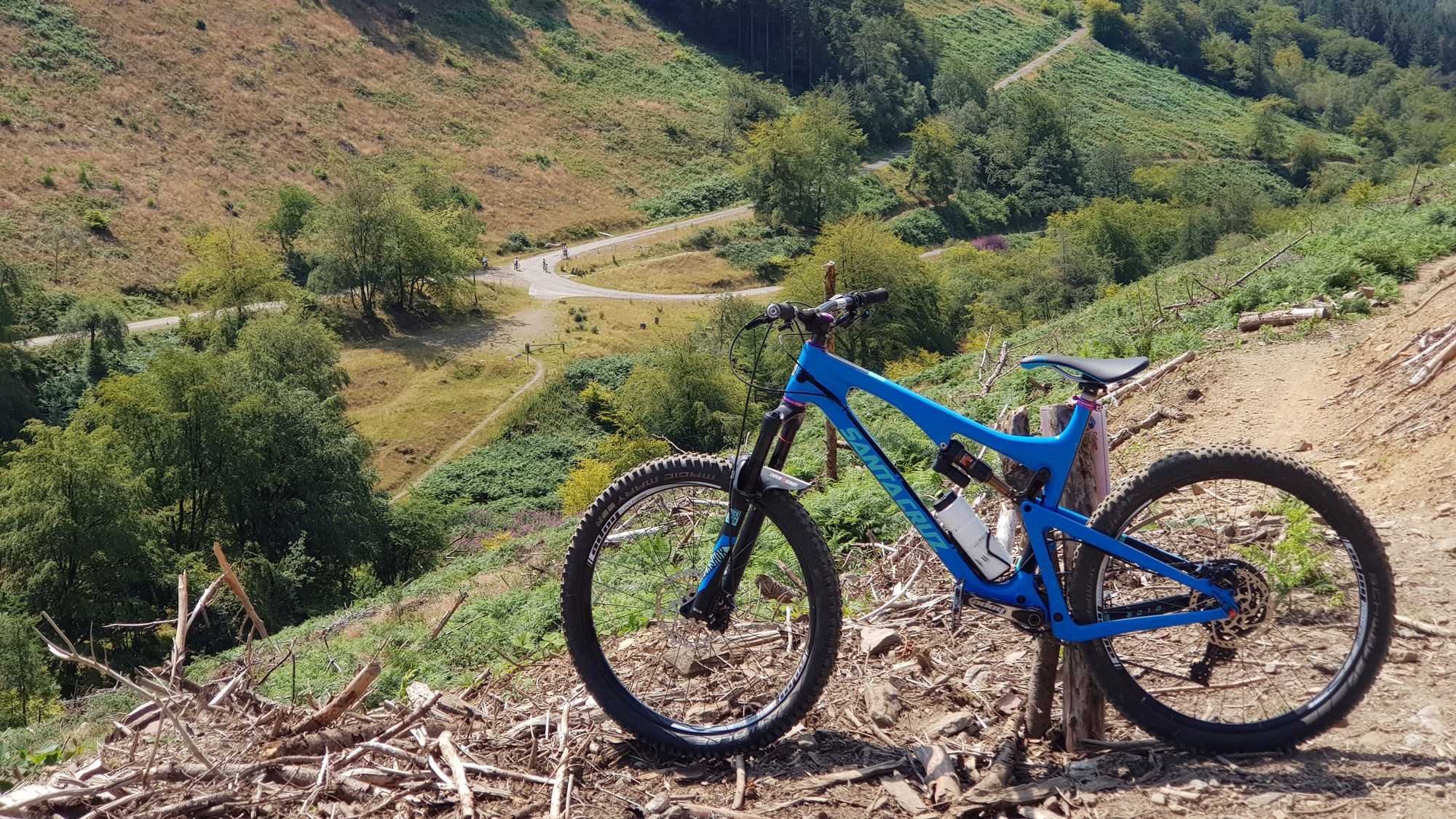
To this end Skoda has supported the Tour de France for the last 16 years and also brands and sells a whole bunch of cycling accessories – helmets, lycra, water bottles and such, as well as a range of bikes. A nod to the maker’s origins as a cycle manufacturer, fact fans.
How much does it cost?
The Karoq in question is a two-wheel drive 1.6-litre TDI with the automatic DSG gearbox. That means 114bhp and a 0-62mph time of 11.1 seconds – not fast, but then again, fast enough when you’ve got bikes worth thousands of pounds on the roof. It’s also incredibly relaxing and inoffensive to drive, again, a plus point. All-wheel drive would have been a bonus given some of the out of the way car parks we visited in Wales, but the jacked-up ride height meant it did the job just fine.
You can buy the car and most of the stuff in it separately (a lot of them are dealer-fit options in fact) but it’s not available as a complete package. Given the 18-inch Braga alloys and LED headlights I reckon the Velo is based on the well-equipped SE L spec. Some poking around in areas not covered by that bold chain-themed wrap revealed optional black paint, meaning without any other options this car would cost £28,780.
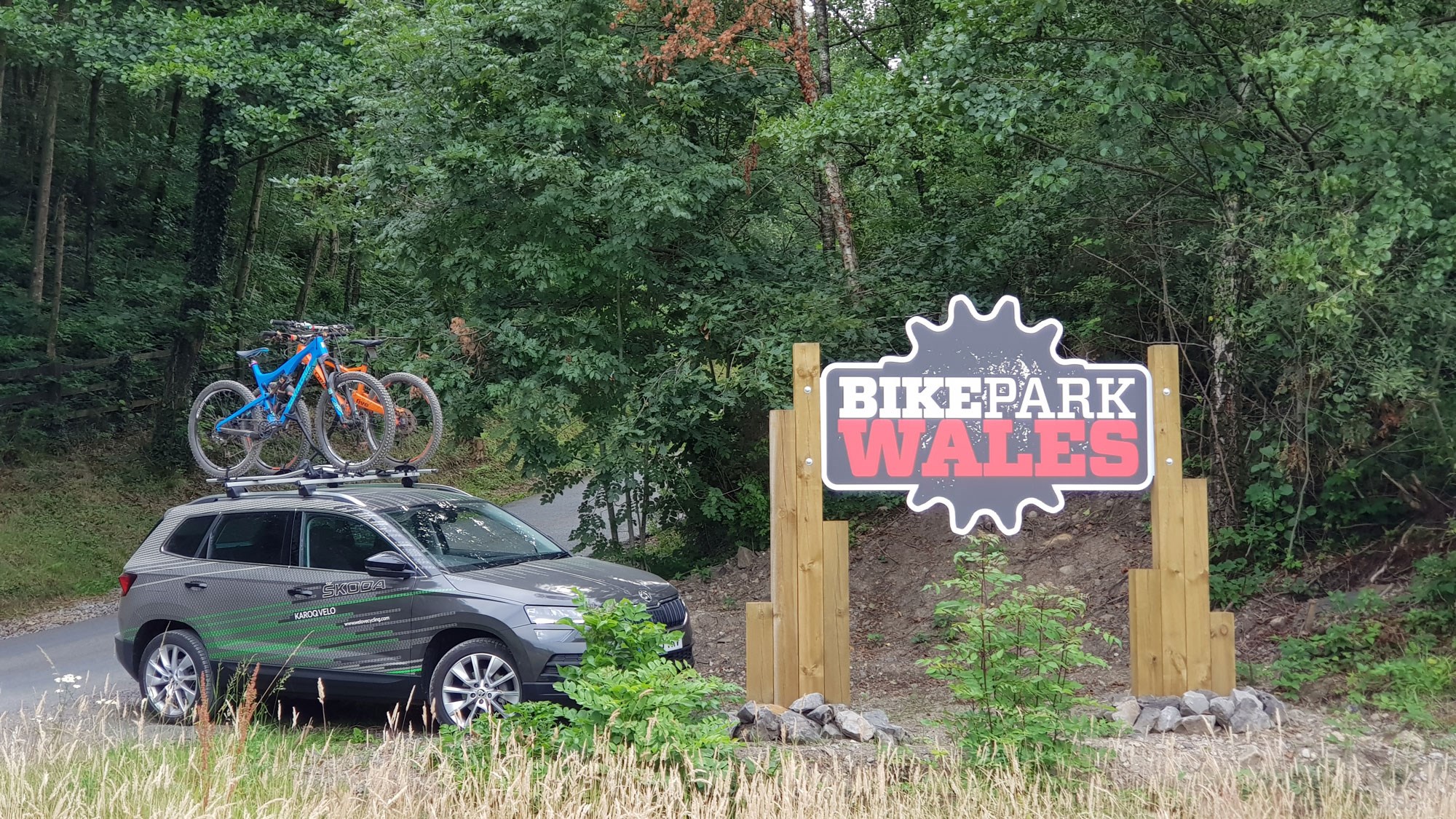
Skoda Karoq Velo: verdict
That’s all academic really because you can’t buy this car but there’s nothing to stop you recreating it with a pressure washer, fridge and bike rack. I wouldn’t bother with the washing machine, personally, because you can just hose your stuff down and either way you’re then faced with the problem of wet kit in the car. A tumble drier or even a roof-mounted rotary clothes line would be more useful.
As far as other wishes are concerned, I’d like to see a bike workstand that swings out from the roof, or an inbuilt compressor to help seat tubeless mtb tyres.
As a package of tech though the Karoq Velo certainly made our four day shredathon very comfortable indeed, even if the custom livery led other riders to believe we were sponsored by Skoda. A Kodiaq Velo would be a better shout for those of us with larger mountain bikes, though.